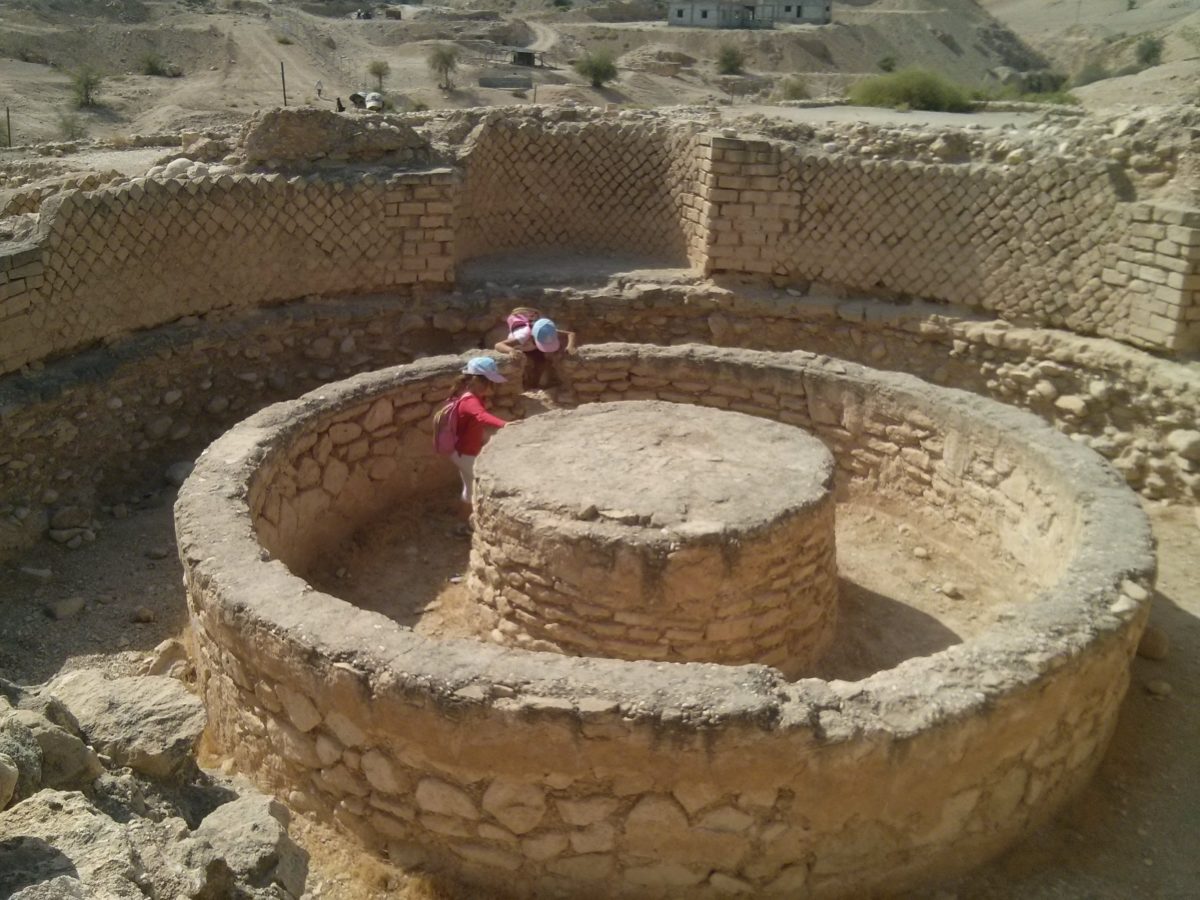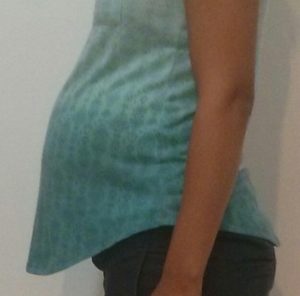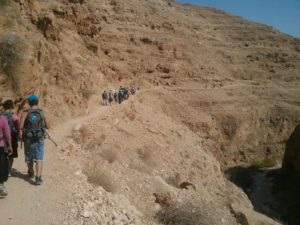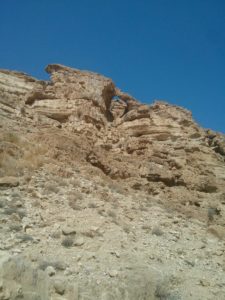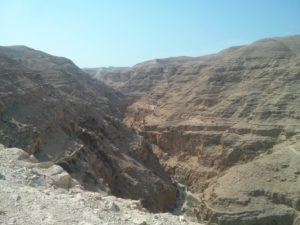Hi,
It’s week 29 and we are starting to stock furniture and equipment: swinging chair, baby beds, drying machine and more.
We are trying to avoid buying new stuff, if we can get it for free it the best. If not, we are looking for second hand =)
It is Sukkot and while most of Israel is traveling, hiking and vacationing in and out of the country I find myself mostly at work. The truth is we could take any extreme hikes and there wasn’t anything I would like to go alone.
I did find one hike I was happy to do – to the Hasmonean royal winter palaces near Jericho. It is basically an Israeli territory but you can’t get there without army permit, and you better not go there alone. So I joined a tour of the SPNI that went with a guide and enjoyed not only the hike, but also some explanations ![]() .
.
Those buildings are not amazing, more like ruins – but the history they tell us is amazing! Those are the palaces of the Jewish Hasmonean kings that ruled in Judea around 2nd century BC. Walking around buildings you read about them in books that were written thousands of years ago make really feel connect to the history of my people ![]()
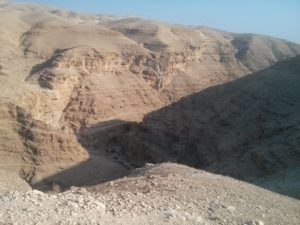 Nahal Prat (Wadi Qelt) – looking down stream to the East
Nahal Prat (Wadi Qelt) – looking down stream to the East
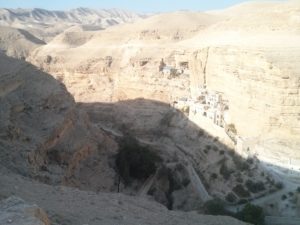
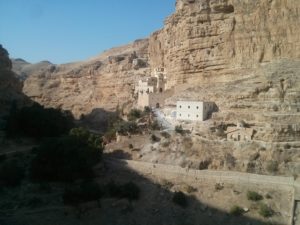
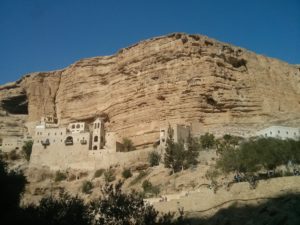 St. Geroge’s Monastery – The most eastern point I got to in the stream, until now
St. Geroge’s Monastery – The most eastern point I got to in the stream, until now
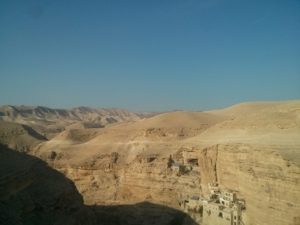 High above in the Horizon is Jerusalem
High above in the Horizon is Jerusalem
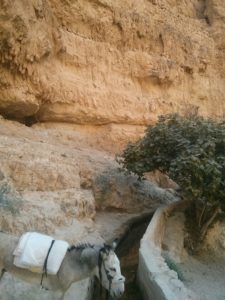 A monkey and the aqueduct that still flew even in the end of the Summer!
A monkey and the aqueduct that still flew even in the end of the Summer!
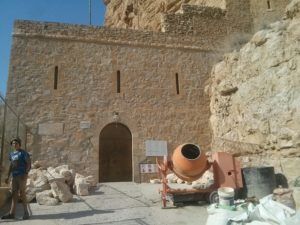
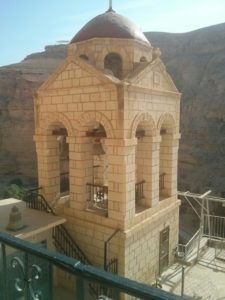
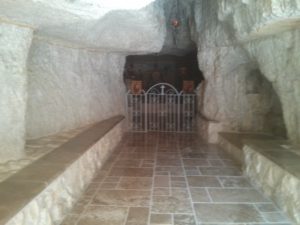
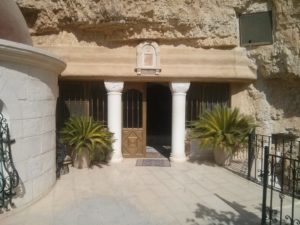
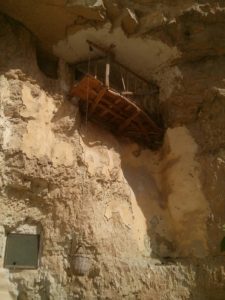 Inside the monastery. The monks spends most of their days in small cabins and gather for two days every week to eat and learn together.
Inside the monastery. The monks spends most of their days in small cabins and gather for two days every week to eat and learn together.

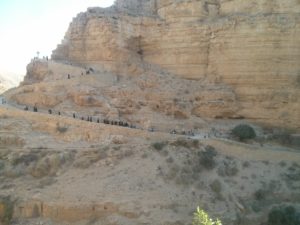 Looking outside from the monastery – To the East and South across the creek
Looking outside from the monastery – To the East and South across the creek
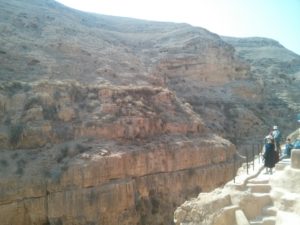 While we are walking on the route of aqueduct on the North slope of the creek, you can see at least another two aqueducts on the south slope
While we are walking on the route of aqueduct on the North slope of the creek, you can see at least another two aqueducts on the south slope
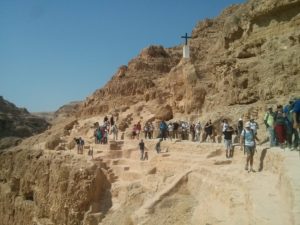 Here, couple of km down the creek from the monastery, the monks visit every day and leave pieces of bread for birds. The tradition says this is where Elijah was fed by ravens, and monks feed the birds back.
Here, couple of km down the creek from the monastery, the monks visit every day and leave pieces of bread for birds. The tradition says this is where Elijah was fed by ravens, and monks feed the birds back.
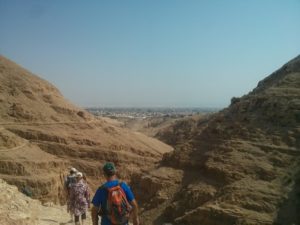 Getting close to the end of the creek, in the distance is Jericho. I have walked down this creek many times but never gone this far.
Getting close to the end of the creek, in the distance is Jericho. I have walked down this creek many times but never gone this far.
 Going out of the creek and the Jordan valley is in front of you
Going out of the creek and the Jordan valley is in front of you
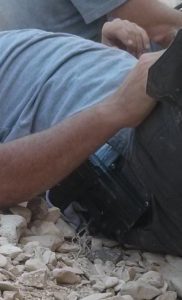 See the pistol? Jericho pistol
See the pistol? Jericho pistol ![]()
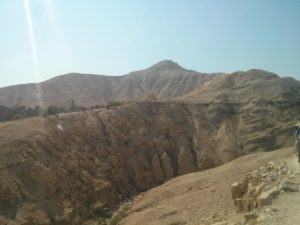 High above us is the Cypros fortress, one of the seven desert fortress built by the Hasmonean dynasty
High above us is the Cypros fortress, one of the seven desert fortress built by the Hasmonean dynasty
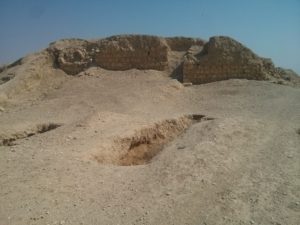
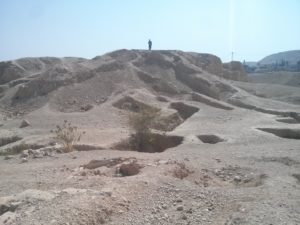 The north mound – A guarding tower, that later on became a palace by John Hyrcans, covered and a larger palace was built on top by Herod
The north mound – A guarding tower, that later on became a palace by John Hyrcans, covered and a larger palace was built on top by Herod
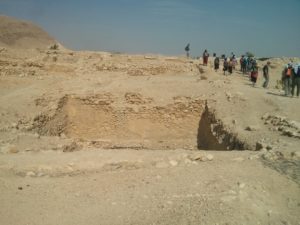
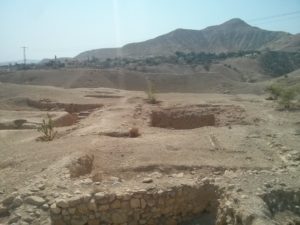 The swimming pools, and bathing houses built by John Jannaeus – of Hasmonean royal family
The swimming pools, and bathing houses built by John Jannaeus – of Hasmonean royal family
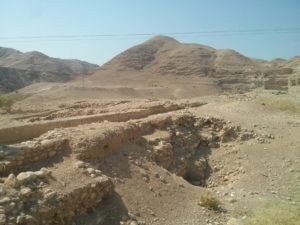 The end of the aqueduct that led the water to the swimming pools
The end of the aqueduct that led the water to the swimming pools
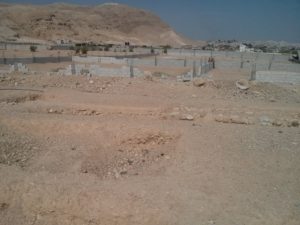 New building that marks the edge of the place area. In this area of the building – the hugh garden of Afarsimon trees that were used to make oil.
New building that marks the edge of the place area. In this area of the building – the hugh garden of Afarsimon trees that were used to make oil.
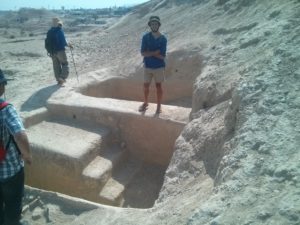 A Mikveh below the Hasmonean palace. You can know it is a Mikveh (used to bath and clean in times according to the Jewish religion), because there are steps that take much of the volume of the bath.
A Mikveh below the Hasmonean palace. You can know it is a Mikveh (used to bath and clean in times according to the Jewish religion), because there are steps that take much of the volume of the bath.
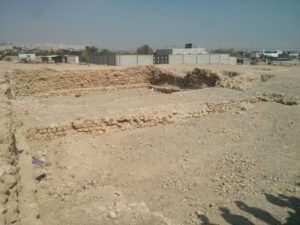 The big swimming pools (10x10m), and bathing houses built by Alexander Jannaeus. The story goes, that Herod was afraid the 17t years old great priest that was handsome and was loved by the people will take over the kingdom. He invited him to spend time with him here, made him drunk and asked his people “to play” with him till he will die.
The big swimming pools (10x10m), and bathing houses built by Alexander Jannaeus. The story goes, that Herod was afraid the 17t years old great priest that was handsome and was loved by the people will take over the kingdom. He invited him to spend time with him here, made him drunk and asked his people “to play” with him till he will die.
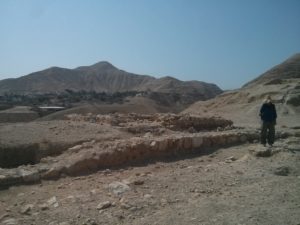 High above the palace is Cyrpos fortress
High above the palace is Cyrpos fortress
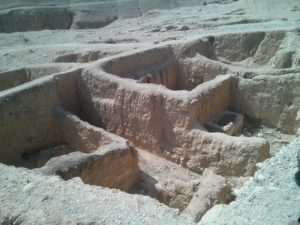
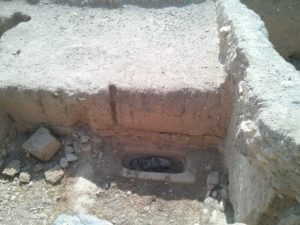 The two palaces that were built for Hyrcanus II and Aristobulus II. Both to sons of Salome Alexandra that fought in 60’s BC over the Jewish High Priesthood. Like two small kids – two exact palaces were built for them, each for a different brother. Look at the bath in both of the palaces.
The two palaces that were built for Hyrcanus II and Aristobulus II. Both to sons of Salome Alexandra that fought in 60’s BC over the Jewish High Priesthood. Like two small kids – two exact palaces were built for them, each for a different brother. Look at the bath in both of the palaces.
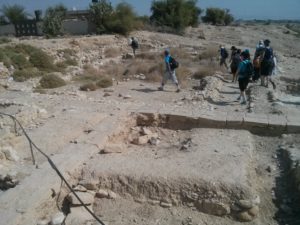
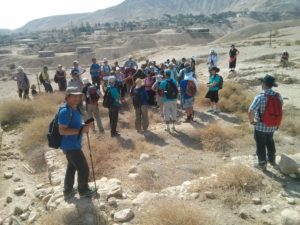
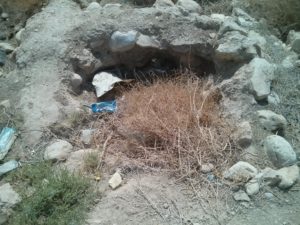 Might be the most ancient synagogue in the world! Built around 50-75 BC. Around 11.5×16.5 m, with benches around the walls. The hole might be the Torah Arc, or for Genizah (storage area in a Jewish synagogue or cemetery designated for the temporary storage of worn-out Hebrew-language books and papers on religious topics prior to proper cemetery burial).
Might be the most ancient synagogue in the world! Built around 50-75 BC. Around 11.5×16.5 m, with benches around the walls. The hole might be the Torah Arc, or for Genizah (storage area in a Jewish synagogue or cemetery designated for the temporary storage of worn-out Hebrew-language books and papers on religious topics prior to proper cemetery burial).
Pretty sad this is how the most ancient synagogue in the world, covered with sand and bushes ![]()
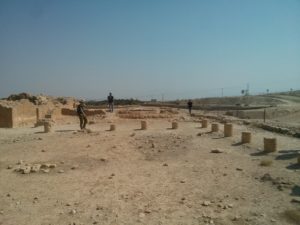
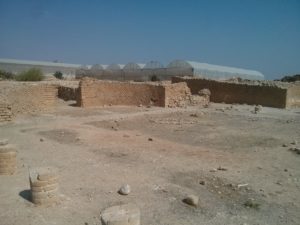
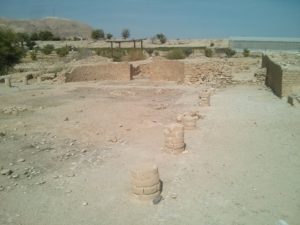
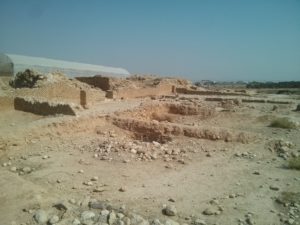 Herod’s third Palace- Herod demanded the palace will be built the same way Roman palace were built. The materials were brought from far away and the techniques were not relevant for the area. The walls were covered with plaster, meaning that none will see how it was built and from what materials…
Herod’s third Palace- Herod demanded the palace will be built the same way Roman palace were built. The materials were brought from far away and the techniques were not relevant for the area. The walls were covered with plaster, meaning that none will see how it was built and from what materials…
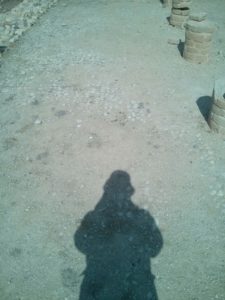 One of the flooring types in the palace
One of the flooring types in the palace
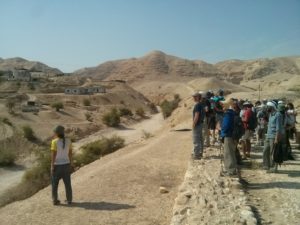 The palace was built on the banks of a river, just like in other Roman palaces. Just in this case it is a dry stream in the desert were only few days a year it is full of water.
The palace was built on the banks of a river, just like in other Roman palaces. Just in this case it is a dry stream in the desert were only few days a year it is full of water.
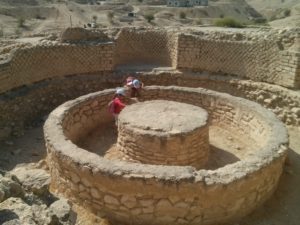 The bathing room in the palace – Just like in Rome.
The bathing room in the palace – Just like in Rome.
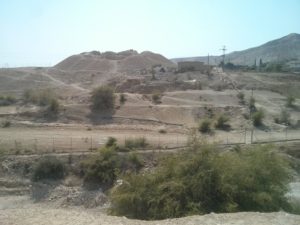 The other part of Herod’s palace was on the other side of the stream – the gardens area, and a hugh pool for naval fights. A bit upstream there was a bridge to cross the stream.
The other part of Herod’s palace was on the other side of the stream – the gardens area, and a hugh pool for naval fights. A bit upstream there was a bridge to cross the stream.
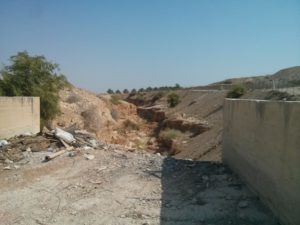 Crossing the stream to the other side. Downstream you can see a small bridge.
Crossing the stream to the other side. Downstream you can see a small bridge.
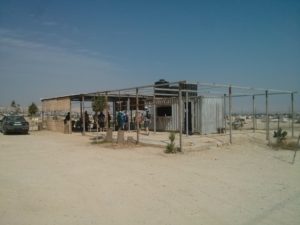
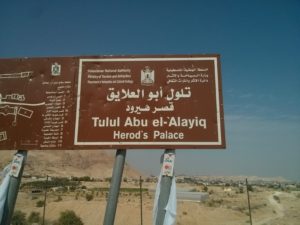
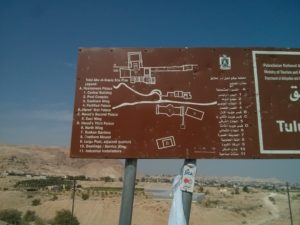 A small kiosk in the South bank of the stream, and an explanation sign about the Complex. Except a few road signs this is the only markups to this important historical area
A small kiosk in the South bank of the stream, and an explanation sign about the Complex. Except a few road signs this is the only markups to this important historical area ![]()
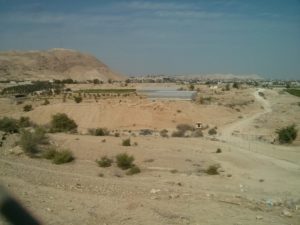 This Herod’s palace from across the stream.
This Herod’s palace from across the stream.
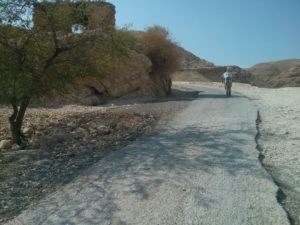 Climbing up the mountain back to the starting point
Climbing up the mountain back to the starting point
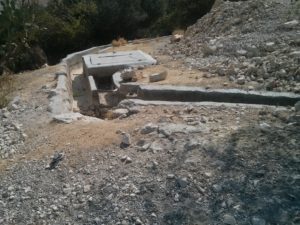
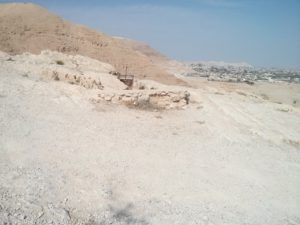 Crossing the aqueduct – which is dry in this point
Crossing the aqueduct – which is dry in this point

